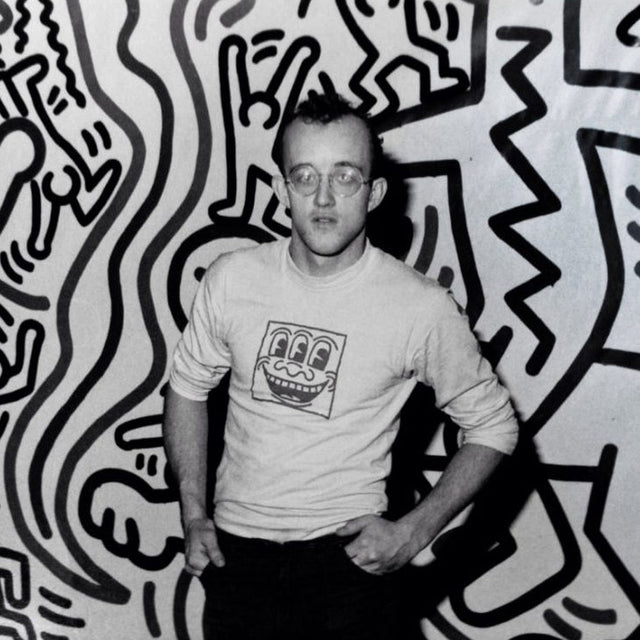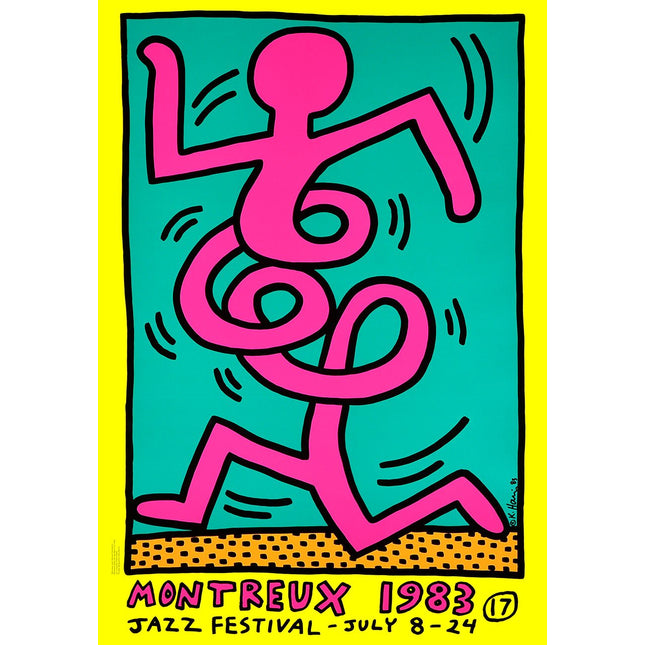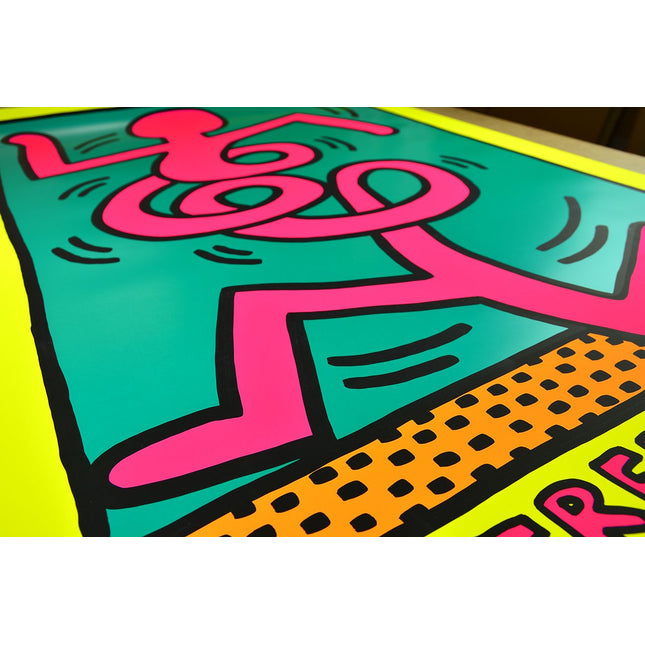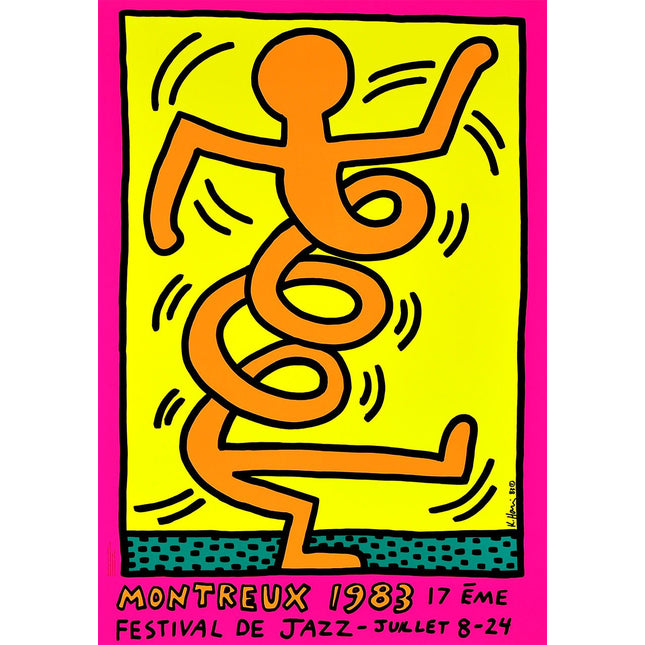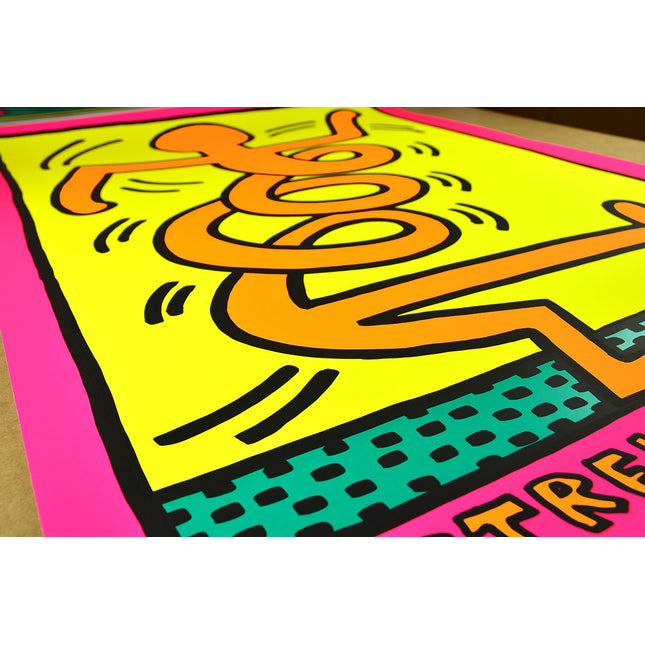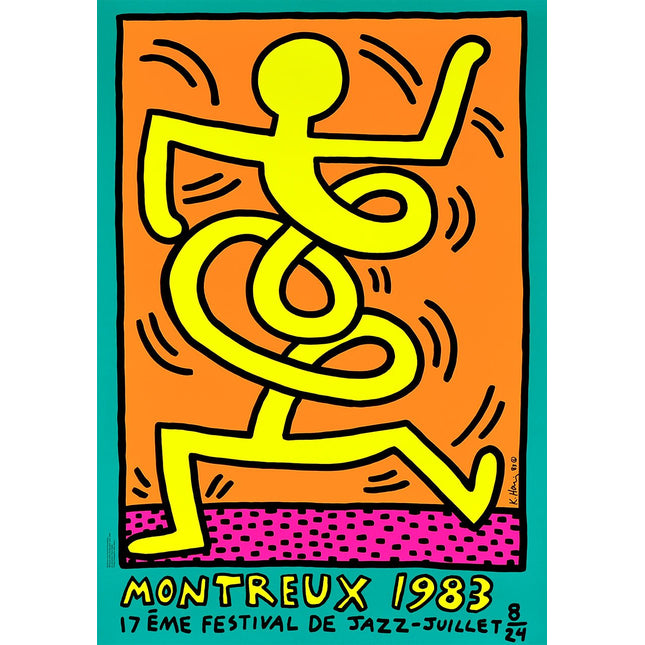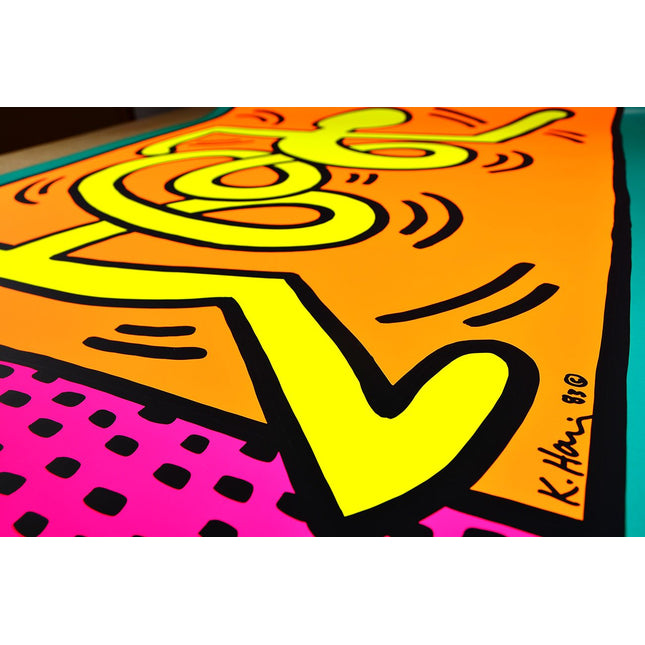Keith Allen Haring was born in Kutztown (Pennsylvania) in 1958. He studied art at the Ivy School of Art in Pittsburgh and continued his training at the New York School of Visual Arts, where he studied the science of signs, discovering that images can convey as much as words.
During the 1980s Haring took the street with his graffiti. He began by drawing with a thick marker images on advertisements of the New York subway and occupying spaces intended for advertising. No surprise he was arrested several times for damaging public property.
The Tony Shafrazi Gallery in New York showed Keith Haring's first exhibition in 1982, which introduced him to the art market. In a very short time he became a highly valued artist nationally and internationally.
In 1986 he made a mural in New York to celebrate the centenary of the Statue of Liberty and painted a piece of the eastern side of the Berlin wall. In that same year he also opened the Pop Shop boutique, where all his products could be purchased.
In 1989 he created the Keith Haring Foundation, with the aim to fight for the solution of social problems.
Influenced by Walt Disney and his father, an amateur cartoonist, Keith Haring's work is characterized by its naive aesthetic that combines pop art with animation and design, always with a high social criticism burden. His works show well-defined simple silhouettes with thick strokes of flat colors.
Just like Warhol did, Keith Haring broke down barriers combining art with music and fashion, seeking to make his works accessible to anyone.
Haring's iconography includes animals, children, televisions, pyramids, flying saucers and sex scenes. The artist uses these visual images to reach a larger audience and discuss about such universal themes as life, death, sex, drugs and technology.
He died a victim of AIDS in New York on February 16, 1990.
